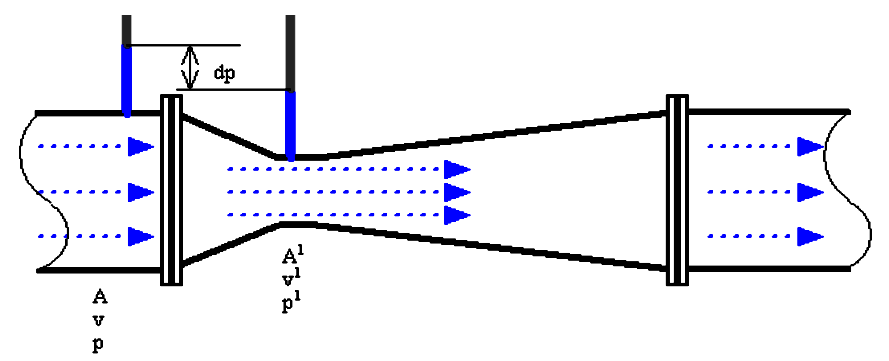Due to its simplicity and dependability, the Venturi tube flow meter is often used in applications with higher turn down rates or lower pressure drops than the orifice plate can provide.
In the Venturi tube as shown in figure, the fluid flow rate is measured by reducing the cross sectional flow area in the flow path, generating a pressure difference. After the constricted area, the fluid is passed through a pressure recovery exit section where up to 80 percent of the differential pressure generated at the constricted area is recovered.
With proper instrumentation and flow calibration, the Venturi tube flow rate can be reduced to about 10 percent of its full scale range with proper accuracy. This provides a turn down rate of 10:1.
Benefits or advantages of Venturimeter
Following are the benefits or advantages of Venturimeter :
➨It has low head loss which is about 10% of differential pressure head.
➨It can be used to measure higher flow rates in pipes having few meters of diameters. This is due to high coefficient of discharge owing to lower loss.
➨It can be used in any position e.g. horizontal, vertical or inclined.
➨Higher sensitivities can be achieved due to smaller size throat leads which leads to higher pressure differential.
Drawbacks or disadvantages of Venturimeter
Following are the disadvantages of Venturimeter :
➨It can not be used in limited space applications due to larger size.
➨Due to large size, the cost of venturimeter is higher.
➨Due to large size, the cost of installation is higher.
➨Very small diameter of throat results into cavitation of fluid in the throat.
